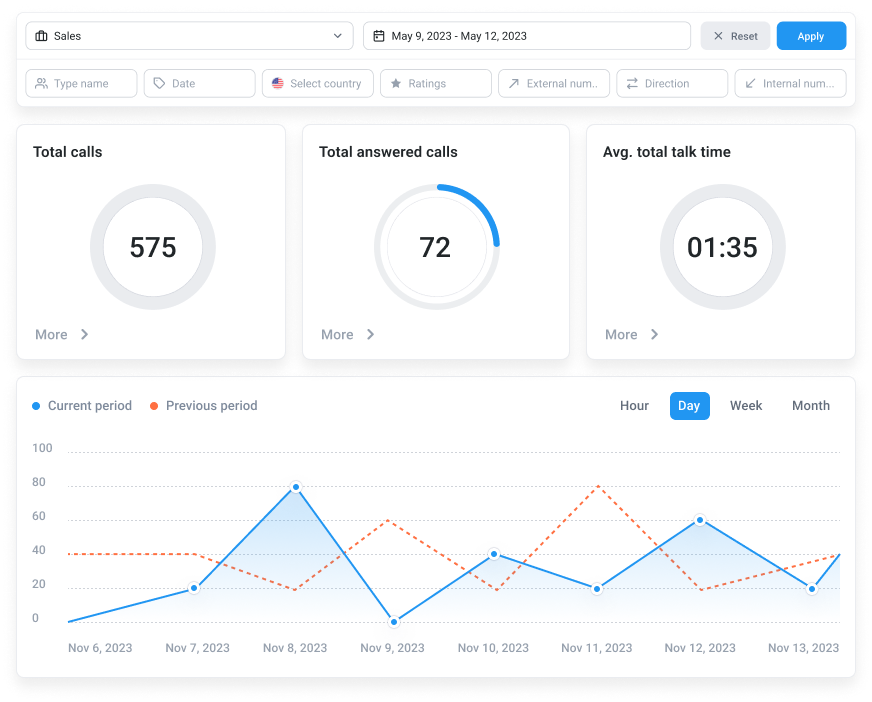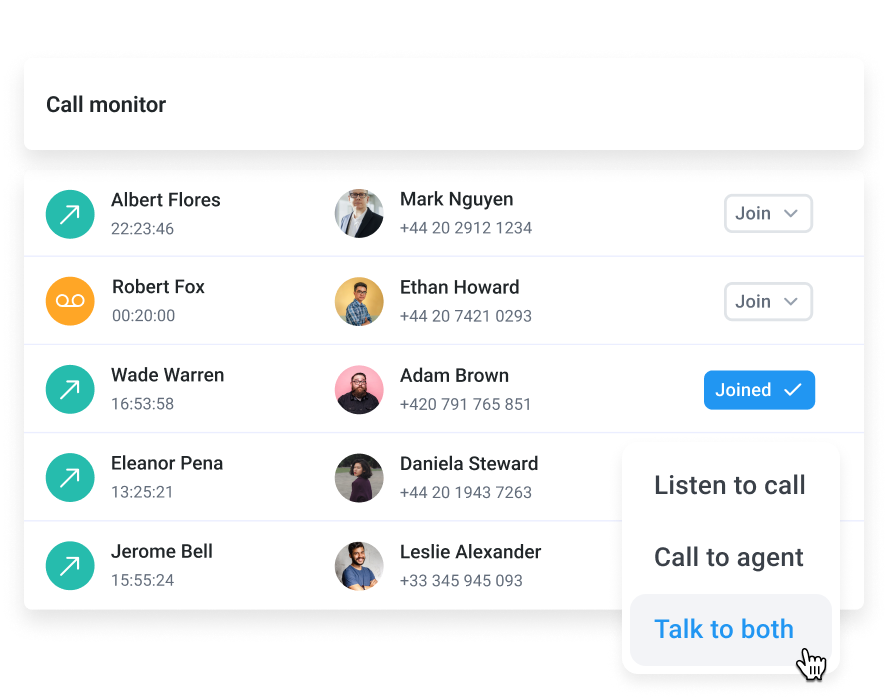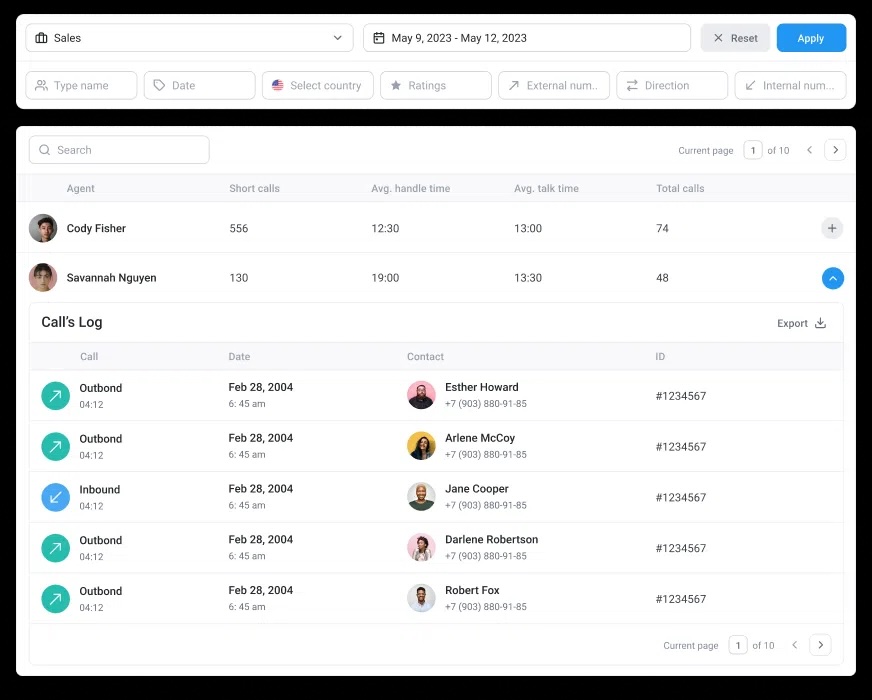How to Create Urgency in Sales Without Being Pushy: A Guide for Leaders

Jill hits send on yet another pushy email to close the deal. She hates being this person, but with her team’s numbers down 20% and three colleagues already laid off this quarter, what choice does she have?
Across town, Erica closes her laptop with a smile. She just landed a $2M enterprise deal in half the usual time—without a single high-pressure tactic.
These two salespeople face the same challenges: Shrinking budgets, longer sales cycles, intense competition, and pressure from leadership. But their approaches couldn’t be more different. While Jill’s pressure tactics drive away potential buyers and damage her company’s reputation, Erica has discovered something powerful: How to create genuine urgency that makes prospects want to move forward.
The stakes are clear: Research shows salespeople who follow mature, predictable methodologies achieve 8-12% higher win rates and are 48-66% more likely to hit quota.* Their companies are nearly twice as likely to see year-over-year revenue growth.
In this guide, you’ll learn the psychology behind real urgency that gets deals moving organically, and how to accelerate sales cycles without sacrificing customer trust.
Key Takeaways:
- Urgency can help sales teams close deals faster, by helping buyers recognize the genuine consequences of delay.
- Sales teams with the right sales tactics and tools like CloudTalk can optimize for higher conversions.
- By conducting relationships in a transparent and educational manner sales teams can build long term relationships.
Close deals faster with an average ROI of 2.5x
Why Urgency Matters for Closing Deals
Loss aversion is twice as powerful as potential gains in driving human decisions. While we might drag our feet about gaining something new, the prospect of ‘missing out’ triggers immediate action. This explains why genuine urgency, based on real consequences of delay, is so effective at moving deals forward.
However, timing matters. 40% of pipeline deals end in “no decision” because buyers lack compelling reasons to change from their status quo. Creating artificial pressure here doesn’t help; it often backfires, with B2B buyers walking away from high-pressure sales tactics.
The sweet spot lies in aligning urgency with the buyer’s natural timeline:
- Early stage: Focus on pain points and the cost of inaction
- Middle stage: Demonstrate concrete value and ROI timing
- Late stage: Highlight specific deadlines or milestones that matter to their business
Psychology explains why: Self-Determination Theory and Langer’s “Illusion of Control” demonstrate people commit more readily to decisions when they maintain autonomy. When prospects feel pressured, they resist. When they feel in control while understanding genuine consequences of delay, they act.
Effective urgency leverages this psychology by:
- Framing deadlines transparently, not artificially
- Explaining real losses from inaction (loss aversion)
- Positioning urgency as opportunity rather than pressure
- Respecting prospect’s autonomy in timing
- Demonstrating concrete consequences of delay
This approach creates psychological momentum that moves deals forward naturally, without damaging trust or relationships.
Common Pitfalls When Creating Urgency
Jill is starting to realize that her approach isn’t working. The more she pushes, the more prospects hesitate. Instead of creating urgency, she’s eroding trust. Through trial and error, she’s learning that forcing decisions with high-pressure tactics often backfires.
Just like Jill, your teams should be wary of these critical mistakes:
- “Boy who cried wolf” syndrome makes every opportunity “limited” until buyers become numb to real urgency signals. Research shows buyers actively resist marketing that tries to force decisions.
- Over-promising to drive quick decisions (“sign today, get exclusive features”) leads to buyer’s remorse and high churn. These short-term tactics damage long-term relationships and reputation.
- Using cliché pressure phrases like “Don’t wait!” and “Hurry!” feels manipulative. Aggressive pitches actively turn off potential customers who want autonomy in their decisions.
The crux is that pressure comes from sellers pushing arbitrary deadlines and aggressive tactics, while urgency comes from buyers recognizing genuine consequences of delay.
So, your goal should be to create genuine urgency by helping prospects discover:
- Real costs of delayed decisions
- Concrete value tied to specific timelines
- Authentic deadlines based on business realities, not artificial scarcity
We explore how in the next section!
Speed up your sales cycle by 92%
How to Build Urgency the Right Way
While Jill sends yet another “deal expires today” email to an unresponsive prospect, Erica pulls up her team’s win-loss data. Her analysis shows a clear pattern: Deals close 40% faster when sales reps focus on illuminating costs of delay rather than creating artificial pressure.
The difference? Jill relies on tactics that worked a decade ago, when information scarcity gave sellers the upper hand. But in today’s market, with 57% – 70% of B2B buyers researching solutions before buying, pressure backfires. Erica’s modern approach centers on one principle: Help prospects discover urgency themselves.
Here’s how top performers like Erica consistently accelerate deals while building—not burning—relationships:
Focus on Value-Based Urgency
The same offer presented differently can dramatically change how prospects respond:
Jill’s approach:
“The 20% discount expires at midnight. If you want to save $40,000, you need to sign today.”
Erica’s approach:
“Your team currently spends 20 hours per week on manual data entry. With the 20% discount, you’d save $40,000 while eliminating those hours immediately. Your analysts could redirect that time to the AI initiatives we discussed.”
The difference? Value framing and value affirmation simplify the process of building urgency. Rather than focus on what prospects lose by waiting, highlight what they gain by acting.
Value-based approaches that work:
- Package strategic upgrades with immediate cost savings
- Bundle implementation support when it aligns with the prospect’s capabilities
- Offer exclusive features that solve specific pain points
- Structure pricing tiers around measurable ROI milestones
The key is making deadlines feel like natural milestones in the prospect’s journey, not arbitrary pressure points in yours.
Use Storytelling and Case Studies
How you tell the story impacts the final conversion:
Jill’s approach:
“Our clients see great results. You should move forward before losing more revenue.”
Erica’s approach:
“A bank similar to yours delayed implementation by 6 months, costing them $300K in recoverable fraud losses. Meanwhile, First National Bank identified $2M in fraud within 90 days of going live. Their Head of Security would be happy to share their journey with you.”
Success stories create natural urgency by:
- Making abstract risks concrete through peer experiences
- Providing social proof from similar organizations
- Quantifying both opportunity costs and wins
- Building credibility through third-party validation
The key is choosing stories that closely match your prospect’s situation, making the parallel between waiting and losing value unmistakable.
Leverage Timing and Market Conditions
Understanding when buyers are most likely to act can make all the difference.
Jill’s approach:
“Q4 ends soon. You need to use your budget before you lose it.”
Erica’s approach:
“I noticed your industry faces new data privacy regulations in March. Starting implementation in January gives you a 60-day buffer to ensure compliance, while capturing the remaining Q4 budget can save you 30% on licensing costs.”
99% of B2B purchases are driven by organizational changes—such as a digital transformation or operational changes—and 66% of B2B buyers say the amount of change in their organization is overwhelming. In such a scenario, strategic timing points that create natural urgency include:
- Regulatory deadlines that impact operations
- Budget cycles aligned with project scope
- Industry events or seasonal peaks requiring preparation
- Market shifts affecting competitive advantage
The key is connecting external timing factors to internal business implications, making urgency feel natural rather than manufactured.
Empowering your Sales Team to Foster Urgency
The biggest challenge leaders face is watching promising salespeople grow increasingly frustrated. Some reps resort to pressure tactics out of desperation, while others avoid creating any urgency at all, fearful of appearing pushy. Meanwhile, competitors are getting better at accelerating their sales cycles.
The difference between Erica and the rest of the team isn’t natural talent, it’s a systematic approach to building genuine urgency that can be taught, measured, and replicated. Here’s how to build that capability across your entire sales organization:
Train on Active Listening and Personalization
Creating genuine urgency requires understanding each prospect’s unique challenges. Top sales teams master:
- Deep listening to uncover hidden motivations
- Actively addressing customer concerns
- Personalizing value propositions to specific needs
All of this can be made simpler with tools like CloudTalk and its AI-powered features including:
- Skill-Based Routing: Intelligently direct calls to agents with specific expertise, ensuring customers connect with the most qualified representative for their needs.
- Sentiment Analysis: Detect emotional nuances during calls to adjust communication dynamically.
- Topics Extraction: Analyze conversations to identify customer pain points, refine sales scripts and improve communication strategies
- Call Notes: Automatically transcribe and analyze call conversations, extracting key topics and insights for continuous improvement.
- Real-Time Dashboard: Provide instant visibility into team performance, agent status, call metrics, and customer interaction analytics.

The result: Create urgency that feels authentic, respectful, and precisely aligned with customer needs.
For example while watching Erica and Jill handle the same objection reveals why some salespeople consistently outperform:
Jill’s approach: Interrupts prospect’s concerns about implementation timing: “But we have the best onboarding team! They can get you live in two weeks.”
Erica’s approach: Uses CloudTalk’s call recording to capture exact pain points: “Earlier you mentioned Q2 growth targets. Help me understand how implementation timing impacts those goals.”
Use Data and Tools to Prioritize Leads
While Jill scrambles to follow up with every lead, Erica knows exactly who needs attention right now. The difference? Smart use of data to spot purchase signals.
As mentioned before, most B2B buyers are looking for a change in tools driven by organization wide changes, hence when they do reach out, timing becomes critical. Sales teams treating every lead equally miss crucial moments when prospects are ready to move.
Key buying signals that indicate urgency:
- Multiple stakeholders suddenly engaging
- Increased content engagement
- Direct competitor comparisons
- Budget discussions entering conversations
- Specific timeline mentions
Fortunately it’s easy to track these key data points with CloudTalk:
- Call Recording: Review conversations to spot buying signals and timing triggers
- Call Monitoring: Enable real-time coaching when high-value prospects engage
- Call Queuing: Automatically prioritize and route high-intent prospects to top performers

This data-driven approach means spending time on the right deals at the right moment, when urgency is genuine rather than manufactured.
Role-Play Scenarios and Provide Feedback
Like most sales skills, creating authentic urgency improves with practice. Sales role-play replicates real customer interactions, letting reps:
- Test different approaches safely
- Get immediate feedback
- Master common scenarios
- Build confidence handling objections
The contrast between Jill and Erica shows why practice matters. When faced with resistance around timing, Jill defaults to canned urgency: “This discount expires tomorrow!” Erica, trained through systematic role-play, asks: “Help me understand how this fits into your Q2 priorities?”
By collecting all relevant information from the features outlined below, CloudTalk enhances role-play training for sales teams to achieve better results:
- Customer Details: Access all customer or prospect data, including recent calls and CRM profiles before, during and after the call.
- Call Tagging: Label phone calls and track types of interactions, goals, outcomes and many other performance related metrics.
- Agent Reporting: Track your agents’ performance directly in CloudTalk and optimize for the best customer experience possible.

Avoiding Pushy Sales Tactics
Rather than forcing prospects to make decisions, focus on guiding them through the process in a transparent, educational manner.
Here’s what you can do:
Recognize Signs of Resistance
Be attuned to cues that indicate a prospect feels pressured, such as evasive responses, frustration, discomfort, or stalling. When you detect these, adjust your approach to rebuild trust.
With CloudTalk’s Sentiment Analysis, you can gauge customer emotions in real time, allowing your sales team to adjust their tone and approach for a more consultative, non-pushy conversation. By identifying hesitation or interest through AI-driven insights, reps can focus on building trust and addressing concerns rather than pushing for a sale.
Shift the Focus To Education
Rather than using high-pressure tactics, focus on educating prospects about the tangible benefits of moving forward and the potential costs of inaction. Walk them through the decision-making process step-by-step, highlighting relevant deadlines or market shifts that impact their business goals. Present this information objectively, empowering them to see the urgency themselves.
Build a Long-Term Relationship Strategy
Short-term high-pressure tactics may secure a quick win, but they often come at the cost of damaged trust and strained relationships. Instead, take a consultative approach that prioritizes the prospect’s interests and timeline. This builds loyalty and paves the way for future business and referrals. Demonstrate your commitment to understanding their needs and providing ongoing value, even if the sales cycle takes longer.
Metrics and Strategies to Measure Effectiveness
To measure the effectiveness of your urgency-building strategies, track metrics including:
- Conversion rates and sales cycle length: Monitor how urgency-driven techniques impact measurable outcomes like deal conversion rates and sales cycle duration.
- Prospect feedback: Gather direct insights from customers on how your urgency strategy was received. This can uncover opportunities to refine your approach.
- Team performance: Review data on individual sales reps to identify top performers and understand what tactics work best. Use this to refine training and strategies across the organization, to increase sales team productivity.
Align Urgency with the Buyer’s Timeline
Creating genuine sales momentum requires understanding the delicate balance between pressure and urgency.
While aggressive tactics can damage relationships, aligning with your buyer’s natural decision-making process can dramatically increase conversions by up to 147%.
The key is empowering your sales team to build authentic urgency that respects the customer’s timeline. This approach accelerates deals and fosters trust and long-term relationships. When equipped with the right tools like CloudTalk and AI-powered features like Customer Details, Call Tagging, and Agent reporting, your teams can achieve an impressive average ROI of 2.5x.
Close deals faster with an average ROI of 2.5x
*Sources
- JohnnyGrow. The Sales Excellence Report
FAQs about creating urgency in sales
How do you create urgency in B2B sales?
For fast-closing in sales, highlight limited-time offers, showcase potential revenue loss, and use time-sensitive incentives.
What’s an example of creating urgency in sales?
A good example of creating urgency in sales could be: “Starting implementation in January gives you a 60-day buffer to ensure compliance, while capturing the remaining Q4 budget can save you 30% on licensing costs.”
What is the meaning of creating urgency?
It means motivating prospects to make immediate purchasing decisions by emphasizing time-limited benefits and potential negative consequences of delay.




















